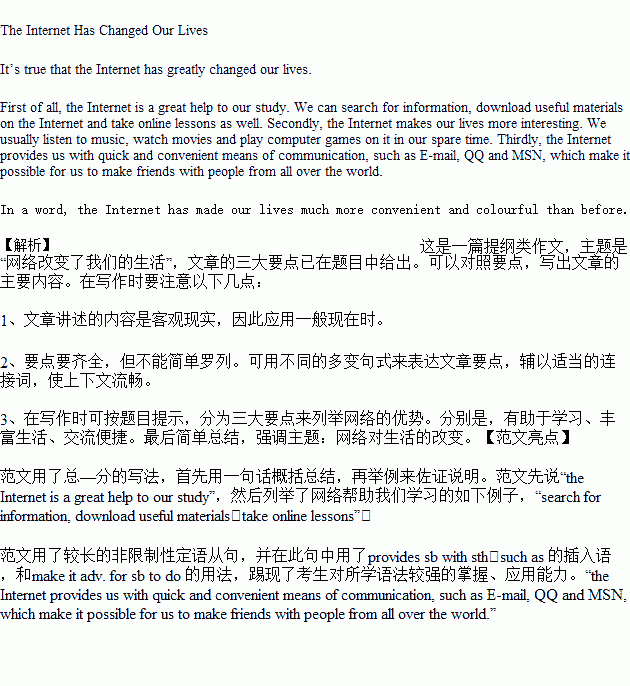��Ŀ����
��The Internet Has Changed Our LivesΪ�⣬������ʾ��дһƪ100�����ҵ����¡����¿�ͷ�Ѹ��������ʵ�����ϸ�ڣ���ʹ�������ᡣ
1.����������ѧϰ�����ǿ��Բ�����Ϣ���������ϣ������ϿΡ���
2.���������ǵ����������Ȥ������ҵ��ʱ�������֣�����Ӱ������Ϸ����
3.����������ṩ�˿�ݷ���Ľ��������ǿ���ͨ��E-mail, QQ, MSN�Ⱥ�������ص��˽����ѡ�
�ؼ���; ���� search for ,���� materials, ���� convenient
The Internet Has Changed Our Lives
It��s true that the Internet has greatly changed our lives.___________________________________________
_______________________________________________________________________________________________________________________________________________________________________________________________________________________________________________________________________________________________
In a word, the Internet has made our lives much more convenient and colourful than before.

